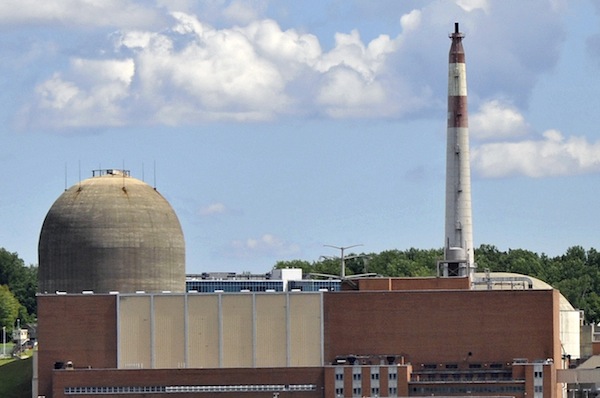
Photo by: Tony
The Indian Point nuclear plant on the Hudson just a few miles north of the city. The ghosts of Three-Mile Island, Chernobyl and Fukushima make many nervous about the facility.
California, Germany, and Japan have one thing in common, increased carbon emissions for Earth Day. Within the past three years, each closed nuclear power plants and replaced the virtually emission free power source largely with coal and fossil fuels.
In a recent report on this issue, I documented the steep rise in green-house-gas emissions and the numbers are staggering. Here is a quick summary of the facts:
Less nuclear power leads to more carbon emissions. Numerous environmental groups seemingly ignore this fact; however, the real world experience of California, Germany, and Japan is irrefutable.
It is laudable to pursue wind and solar technologies, but not as a total replacement of baseload nuclear power.
After nearly killing their economy with over EUR 1 trillion in replacement costs, Germany is coming to realize that massively subsidizing renewables is not the answer. Japan is on the brink of restarting nuclear reactors for environmental and economic purposes. California has a much longer road to travel to get its increased toxic emissions under control, especially now that out-of-state power sources have a stranglehold on supplying their needs.
New York need not follow flawed carbon policies
New York, which is already in violation of federal clean air standards, has an opportunity to avoid some of these failed policies.
The state’s 2014 draft energy plan overlooks the important role its six nuclear power reactors play in keeping the air clean and system reliable. Indian Point alone helps the Empire State avoid over 14 million tons of carbon emissions on an annual basis. Strong consideration should be given to the concept of adding and preserving access to New York’s nuclear fleet to ensure the New York minimizes emissions and maintains the country’s lowest CO2 emissions per capita.
As policymakers return to Albany, greater priority should be given to investing resources in mechanical insulation, a simple, measurable, affordable, and timely approach to reducing energy use, creating jobs, and protecting the environment. Further, public dollars dedicated to energy efficiency programs should be carefully measured and monitored for success. For example, in 2009 the state set a goal of reducing electricity consumption by 15 percent by 2015; however, consumption grew by 2.56 percent through 2012.
In addition, before the state commits $1 billion dollars to the Green Bank, it should issue a study on the cost impact to ratepayers and clearly define the benefit of a $1 billion subsidy for unproven projects – funds which could alternatively address urgent electric infrastructure needs. An ambitious alternative is to use these resources to increase the number of alternative fueled vehicles registered in New York to 1 million vehicles by 2025, significantly cutting emissions from transportation sources.
With this in mind, New York can strengthen its energy policies by heeding climate facts, not avoiding them.
The path to a sustainable future includes nuclear
The bottom line is major environmental backsliding, as in the case of Germany, Japan, and California, must be avoided.
In an open letter to the environmental community, Dr. James Hansen urged all to reconsider nuclear power as part of the solution to address climate change, saying, “While it may be theoretically possible to stabilize the climate without nuclear power, in the real world there is no credible path to climate stabilization that does not include a substantial role for nuclear power.”
On Earth Day, all policy makers should breathe deep and take these issues to heart. In looking to the future, New York’s sustainable energy approach should involve adopting “no harm” policies as well as adding more and preserving access to decarbonized nuclear power.







